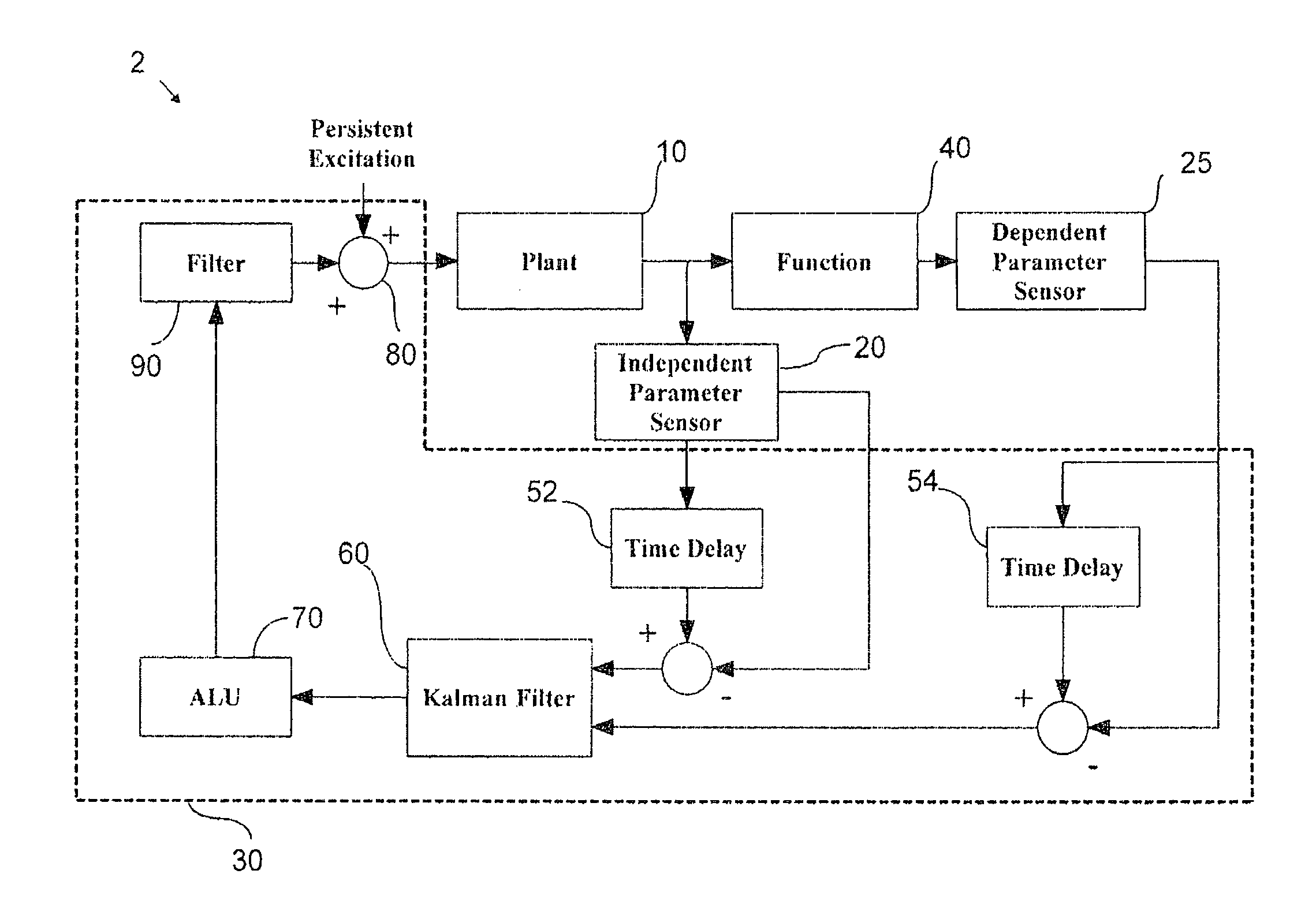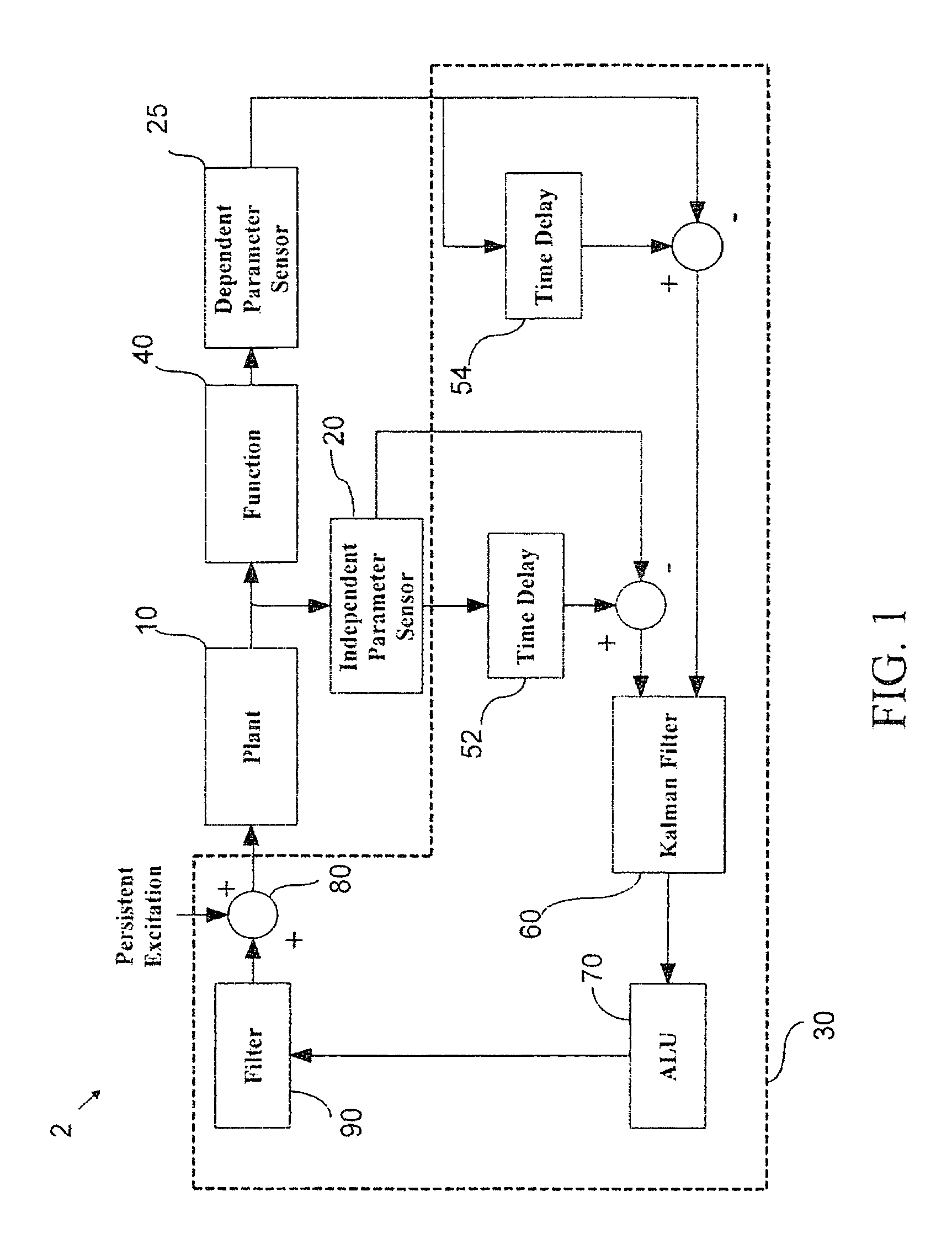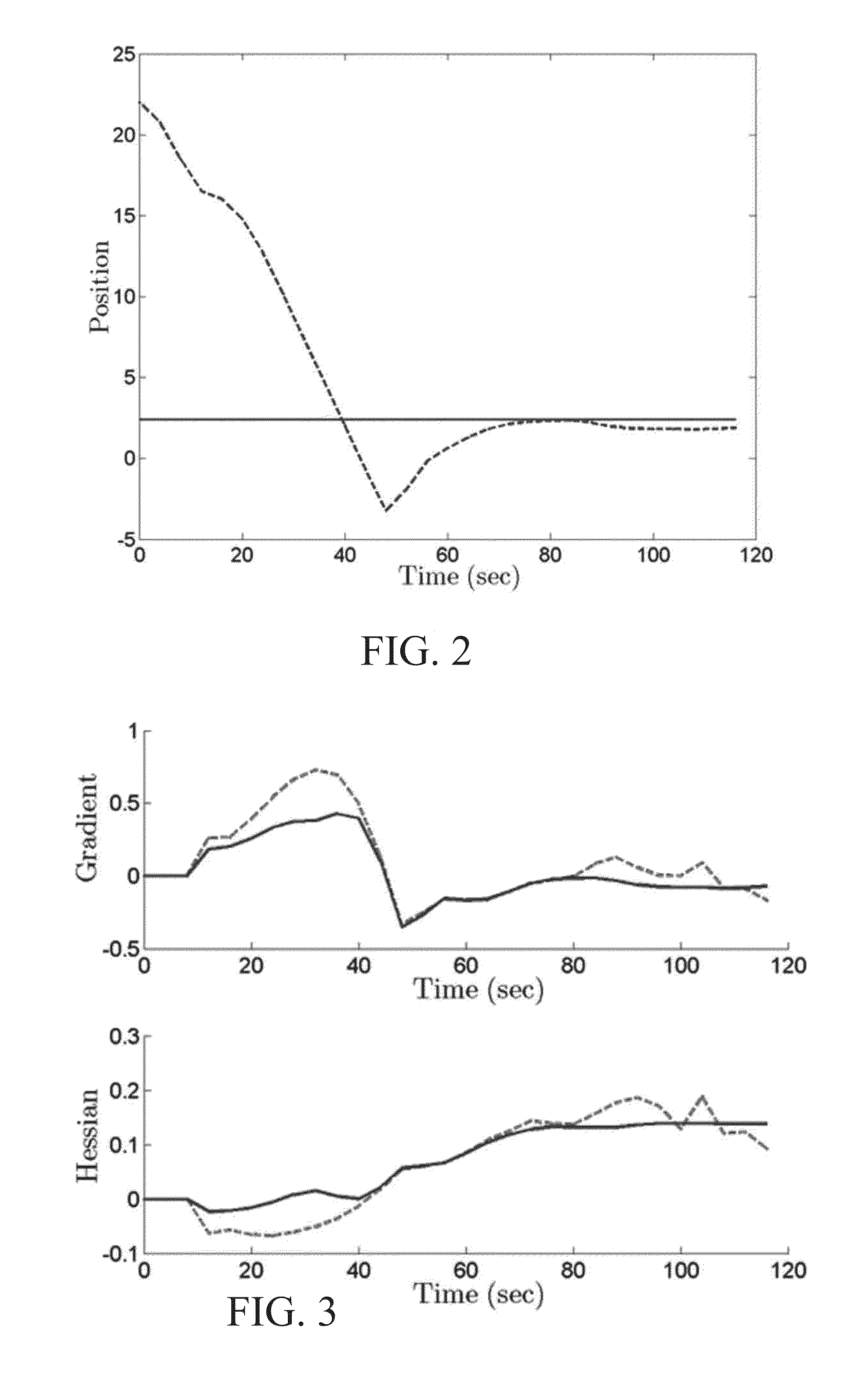Systems and methods for peak-seeking control
a technology of peak-seeking control and system, applied in the field of control systems, can solve the problems of not being able not being able to measure the independent parameters of the performance function, and being unable to provide accurate models in applications
- Summary
- Abstract
- Description
- Claims
- Application Information
AI Technical Summary
Benefits of technology
Problems solved by technology
Method used
Image
Examples
example # 1
Example #1
Simple One-Input One-Ouput Problem
[0065]The following is a one-dimensional example of the method described above. The peak-seeking controller operates on the signals (z, x, y) and ensures that x(t) converges to xmin(θ*). The system under consideration is described by
y=Ay+Bu+; y(0)=yo
x=Cy
z=F(x:θ*)
The continuous linear plant model is given by:
[0066]A=[010001-5-9-5]B=[001]C=[100]
The foregoing system is described in more detail in F. Najson and J. Speyer, “Extremum seeking loop for a class of performance functions,” 15th IFAC World Congress on Automatic Control, Barcelona, Spain, July 2002. For present purposes the performance function is chosen to be f(x)=(cos(x / 8.4)+1.5) (x / 6−0.4)2. Note that this performance function provides a gradient and Hessian that change as a function of position. The performance function magnitude measurements were corrupted with Gaussian distributed noise with a standard deviation of 0.1. There was no noise on the position measurements....
example # 2
Example #2
Two-Input One-Ouput Problem
[0068]A two-dimensional example is presented, and this is more suitable for veicle control in the context of a two-aircraft formation in which the peak-seeking control system 2 is adapted to minimize drag (this is a known application, See, D. F. Chichka et al., supra). It is assumed that a lead aircraft flies in a straight-and-level path. This allows the vortex generated by the lead aircraft to be modeled as static maps of induced drag coefficient and rolling moment on a trailing aircraft as a function of lateral and vertical relative position. The induced drag coefficient map is used as the performance function 40 for plant 60. The magnitude of the rolling moment map for any given position is used as a disturbance input to the trailing aircraft model. The maps were generated using a vortex-lattice method with the trailing aircraft wingtip positioned inside the leading aircraft wingtip vortex. For each position of the map, the aircraft was first ...
PUM
 Login to View More
Login to View More Abstract
Description
Claims
Application Information
 Login to View More
Login to View More - R&D
- Intellectual Property
- Life Sciences
- Materials
- Tech Scout
- Unparalleled Data Quality
- Higher Quality Content
- 60% Fewer Hallucinations
Browse by: Latest US Patents, China's latest patents, Technical Efficacy Thesaurus, Application Domain, Technology Topic, Popular Technical Reports.
© 2025 PatSnap. All rights reserved.Legal|Privacy policy|Modern Slavery Act Transparency Statement|Sitemap|About US| Contact US: help@patsnap.com



